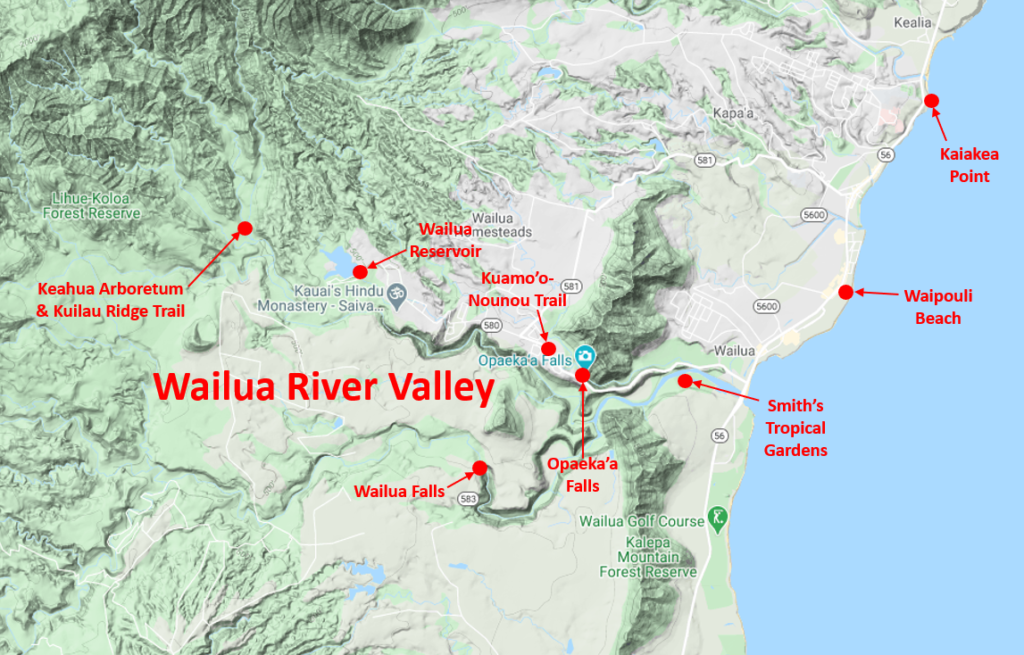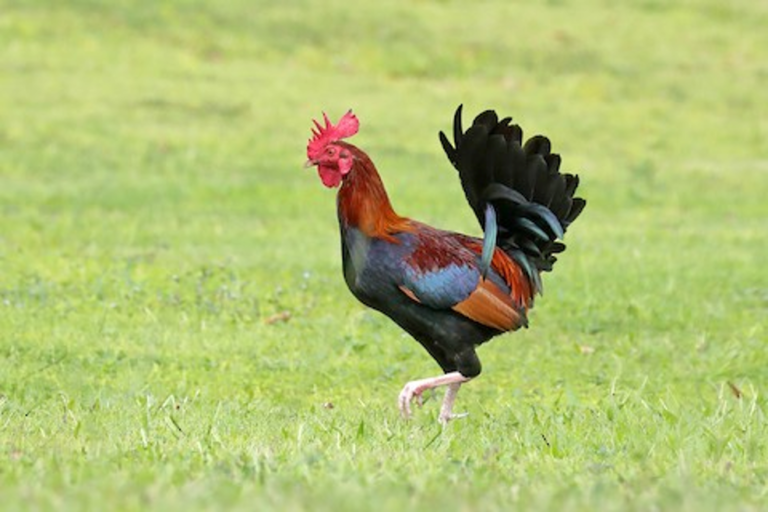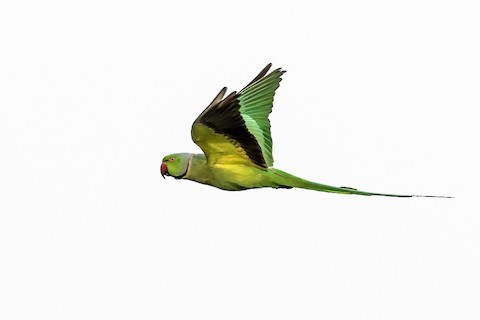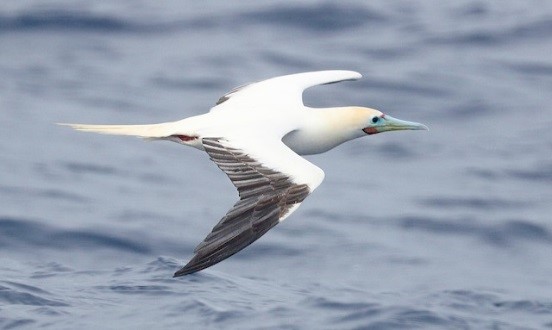Wailua River Valley, Kauai, Hawaii

The Wailua River Valley is a scenic area frequented by the many tourists who stay along Kauai’s eastern shore in Lihue or the Kapa’a area. It has been a consistent site for both of the exotic species that are unique to Kauai, Red Junglefowl and Greater Necklaced Laughingthrush, and also good for other exotics including Rose-ringed Parakeet, White-rumped Shama, Japanese Bush-Warbler, Chinese Hwamei, and Chestnut Munia, and endemic waterbirds such as Hawaiian Duck and Hawaiian Coot.
Orientation
Directions
Access to most of the Wailua River Valley is along Kuamo’o Road (Route 580), which intersects Kuhio Highway about eight minutes’ drive (5.6 miles) north of Lihue Airport.
Birdfinding
The Wailua River Valley is one of few accessible areas in Kauai’s eastern interior. It is generally the best area for Kauai’s shier exotics—in recent years, the most reliable site on Kauai (and by extension North America) for Greater Necklaced Laughingthrush has been the Kuamo’o-Nounou Trail.
The principal sites are along Kuamo’o Road, which follows the North Fork of the Wailua River inland from the northern side of the river mouth. There are a few other sites in the area that may be of interest and are included here due to their proximity—although in general the same birds can be seen more easily elsewhere on the island.
Opaeka’a Falls. Two miles uphill from Kuhio Highway, stop to admire the scenic Opaeka’a Falls—a waterfall of Opaeka’a Creek before it joins the Wailua River. The view often includes Yellow-billed Tropicbirds, which nest on the cliffs near the falls. The vantage point is also good for flocks of Rose-ringed Parakeet which sometimes fly through the area.

Yellow-billed Tropicbird is often present at Opaeka’a Falls. © Eric VanderWerf
Kuamo’o-Nounou Trail. At 2.4 miles from Kuhio Highway, park at the western corner of a grassy field. The Kuamo’o-Nounou Trail follows the edge of the field to a bridge over the North Fork of the Wailua River. After crossing the bridge, the trail climbs the western side of Sleeping Giant into the Nounou Forest Reserve, where Greater Necklaced Laughingthrush can often be found. The trail ultimately arrives at the peak of Nounou Mountain.
Other species that are generally present along the trail include: White-rumped Shama, Warbling White-eye, Chinese Hwamei, Scaly-breasted and Chestnut Munias, Western Meadowlark, and Red-crested Cardinal.
Wailua Reservoir. Around five miles from Kuhio Highway you reach Wailua Reservoir, which usually has Hawaiian Coot, sometimes Hawaiian Duck, and occasionally wintering Ring-necked Duck or Lesser Scaup. A walk around the perimeter may produce various landbirds, including: Red Junglefowl, Rose-ringed Parakeet, White-rumped Shama, Japanese Bush-Warbler, Warbling White-eye, Chinese Hwamei, Scaly-breasted and Chestnut Munias, Western Meadowlark, and Red-crested Cardinal.

Greater Necklaced Laughingthrush can often be found along the Kuamo’o-Nounou Trail. © lingyuetyin

Kuilau Ridge Trail. At 6.8 miles from Kuhio Highway, just before reaching the Keahua Arboretum, the Kuilau Ridge Trail begins on the north side of the road. The hike of a little over two miles should produce many of the following: Red Junglefowl, Rose-ringed Parakeet, White-rumped Shama, Japanese Bush-Warbler, Warbling White-eye, Chinese Hwamei, Greater Necklaced Laughingthrush, Scaly-breasted Munia, Apapane, and Red-crested Cardinal.
Wailua Falls. The South Fork of the Wailua River has its own waterfall, less spectacular and more remote than Opaeka’a Falls. Most of the same birds can be found in this area: Red Junglefowl, Yellow-billed Tropicbird, Rose-ringed Parakeet, White-rumped Shama, Warbling White-eye, Scaly-breasted and Chestnut Munias, and Red-crested Cardinal.

Some portion of the Red Junglefowl population in the Wailua River Valley appears hybrid and chicken-like (as this one does), while some portion appears closer to the original wild stock. © Doug Hommert
Wailua Falls is not directly accessible from the North Fork. To get there, take Ma’alo Road (Route 583) inland from Hanama’ulu for about three miles, to its end.
Smith’s Tropical Gardens. The property on the south side of the Wailua River mouth evidently belongs to family named Smith which has developed it as a tropical garden and picnic ground. The ponds on the property support a few species of waterbirds, including Hawaiian Duck, Black-crowned Night-Heron, Hawaiian Coot, and “Hawaiian Gallinule”.
There is an entry fee. For information about access, see Smith’s Kauai (1-808-821-6895).

Rose-ringed Parakeets are often seen flying through the Wailua River Valley. © Nitin Chandra
Waipouli Beach. A mile and a half north of the Wailua River mouth, Waipouli Beach is among Kauai’s most popular seaside recreation spots. Conveniently located across Kuhio Highway from the Kauai Village Shopping Center, the Waipouli Beach Resort has a large parking area that facilitates public access to the beach via its south side.
The beach is known in part as an occasional haul-out area for Hawaiian Monk Seals and a regular site for common seabirds such as Yellow-billed Tropicbird, Great Frigatebird, and Brown and Red-footed Boobies. Under favorable conditions, mainly in spring, it sometimes produces sightings of Hawaiian and Bulwer’s Petrels and Wedge-tailed and Newell’s Shearwaters.

Red-footed Boobies often fly past Waipouli Beach. © Alan Schmierer
Kaiakea Point. A conveniently accessible seawatch vantage point beside Kuhio Highway 3.7 miles north of the Wailua River mouth, it is a short walk from the roadside parking lot to Kaiakea Point. As with most seawatches, the birds are often too distant to see clearly, and a strong spotting scope is at least preferable, if not essential.
Great Frigatebird, Brown and Red-footed Boobies, and Wandering Tattler are seen regularly.
Species seen less often include: Yellow-billed and Red-tailed Tropicbirds, Laysan Albatross, Hawaiian Petrel, Wedge-tailed, Sooty, and Newell’s Shearwaters, and Brown and Black Noddies.
Rarer sightings have included Mottled and Bulwer’s Petrels.

The rare, endangered, endemic Hawaiian Petrel can sometimes be seen in the distance from Kaiakea Point and Waipouli Beach. © Doug Backlund
Services
Accommodations
Kapa’a has Kauai’s highest concentration of hotel rooms and probably its best selection of affordable options. At the low end of the scale:
Plantation Hale Suites, 1-808-822-4941.
Hotel Coral Reef Resort, 1-808-822-4481.
Kauai Shores Hotel, 1-808-822-4951.
The ISO, 1-808-822-3971.
Mid-range:
Aston Islander on the Beach, 1-808-822-7417.
Hilton Garden Inn Kauai Wailua Bay, 1-808-823-6000.
Sheraton Kauai Resort at Coconut Beach, 1-808-822-3455.
High-end:
Waipouli Beach Resort, 1-808-822-7500.
There are several additional options a short drive south in Lihue.